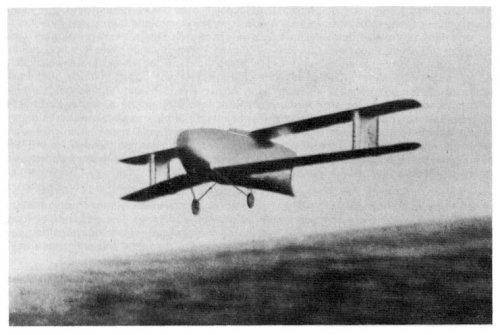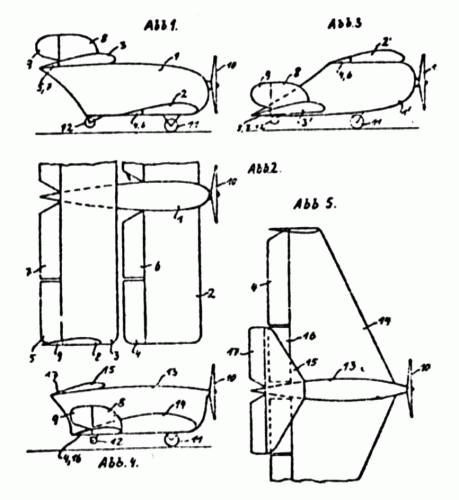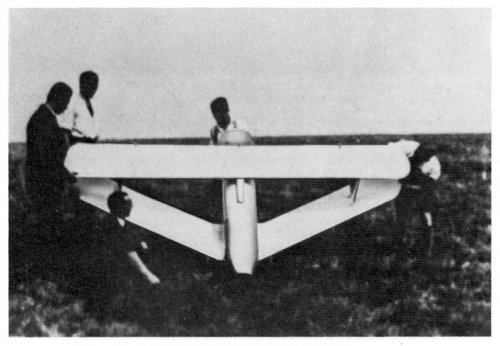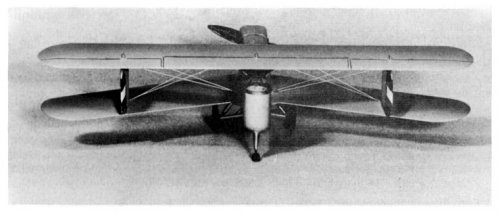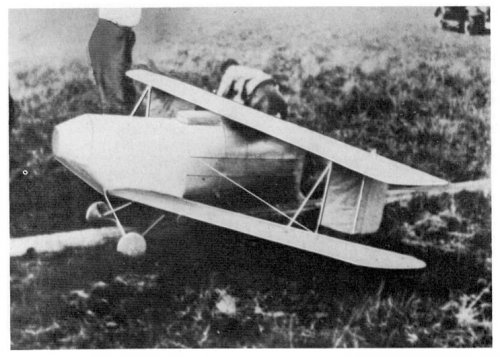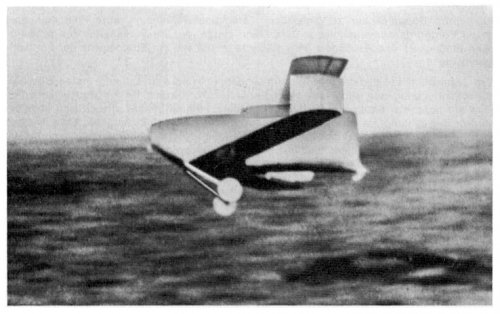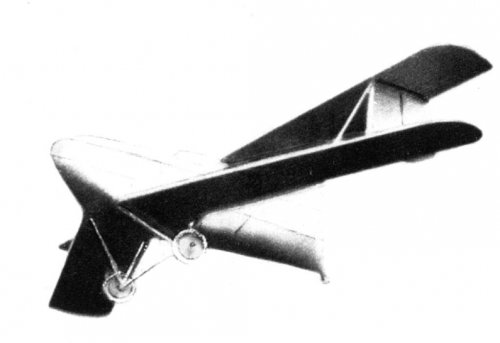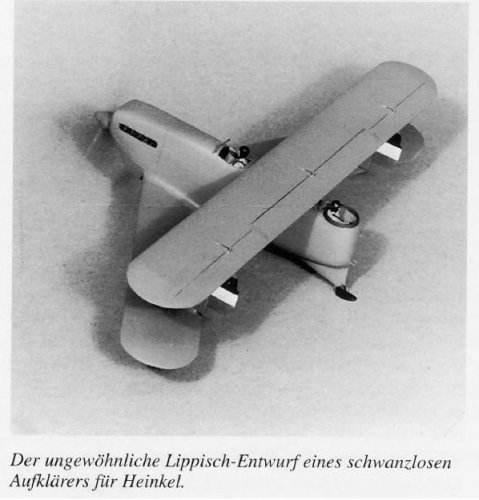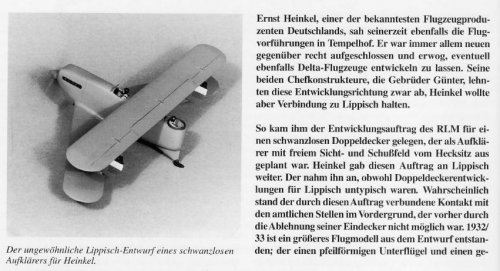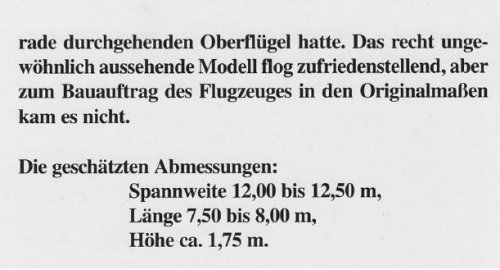- Joined
- 25 June 2009
- Messages
- 13,787
- Reaction score
- 3,095
Tailless or Canard?
That's the question that served as a title for a short article in Luftfahrt International about a little-known Heinkel reconnaissance project of 1932 developed with Rhön-Rossitten-Gesellschaft (RRG in short) under the supervision of (guess who?) Alexander M. Lippisch. And if you look at the pictures, you'll understand why, since nothing about this design was conventional. Considered a doppeldecker (biplane) I guess it could also be considered a sesquiplane because of the high stagger between the upper (rearward) straight wing and the lower (forward) swept wings.
A sub-scale free-flight model was test-flown as can be seen in the photos below. A Lippisch patent of the same year shows some features that were incorporated in the design.
Specifications for the unbuilt real-scale version
(NOTE: @ means "approximately", as it should...):
Wingspan: between 12 and 12.5 m
Wing chord: @ 14 m
Sweepback: @ 20-25 deg.
Wing area: @ 36 sq. m.
Length: between 7.5 and 8 m
Width (max): @ 1.15 m
Height (max): @ 1.75 m
Wheel diameter: @ 1 m
Track gauge: @ 2.4 m
Propeller diameter: between 3.6 and 4 m
That's the question that served as a title for a short article in Luftfahrt International about a little-known Heinkel reconnaissance project of 1932 developed with Rhön-Rossitten-Gesellschaft (RRG in short) under the supervision of (guess who?) Alexander M. Lippisch. And if you look at the pictures, you'll understand why, since nothing about this design was conventional. Considered a doppeldecker (biplane) I guess it could also be considered a sesquiplane because of the high stagger between the upper (rearward) straight wing and the lower (forward) swept wings.
A sub-scale free-flight model was test-flown as can be seen in the photos below. A Lippisch patent of the same year shows some features that were incorporated in the design.
Specifications for the unbuilt real-scale version
(NOTE: @ means "approximately", as it should...):
Wingspan: between 12 and 12.5 m
Wing chord: @ 14 m
Sweepback: @ 20-25 deg.
Wing area: @ 36 sq. m.
Length: between 7.5 and 8 m
Width (max): @ 1.15 m
Height (max): @ 1.75 m
Wheel diameter: @ 1 m
Track gauge: @ 2.4 m
Propeller diameter: between 3.6 and 4 m

